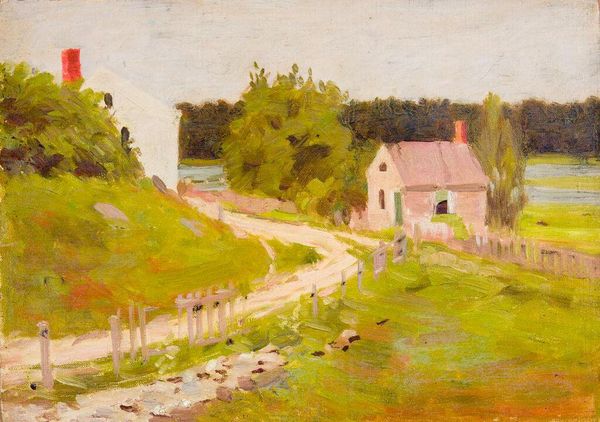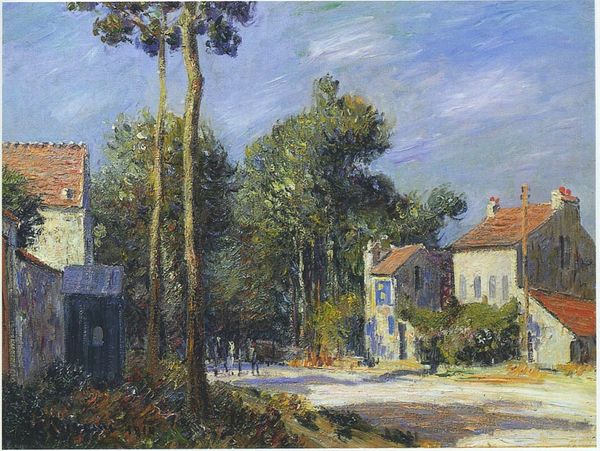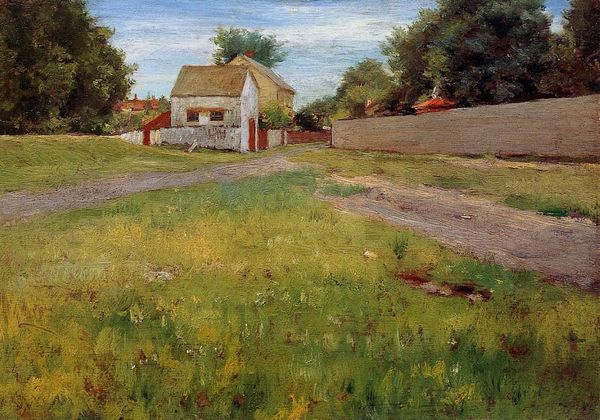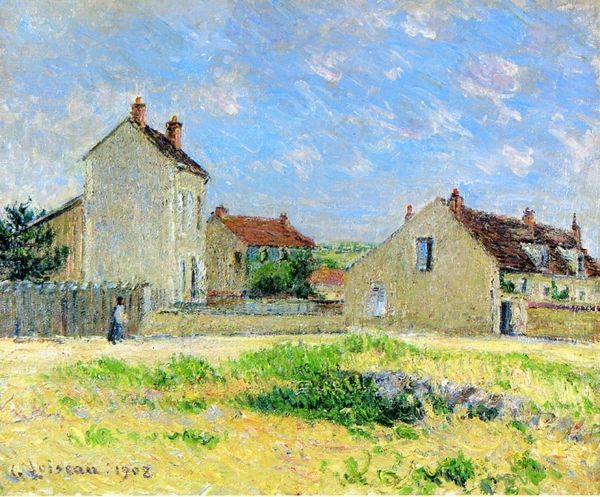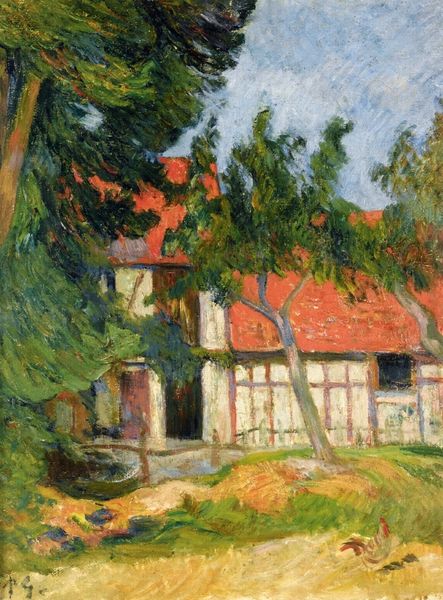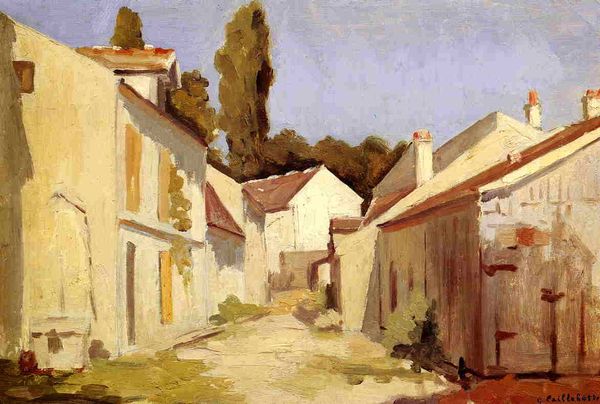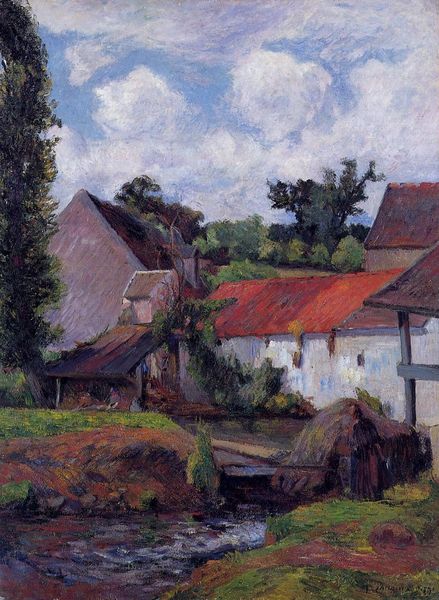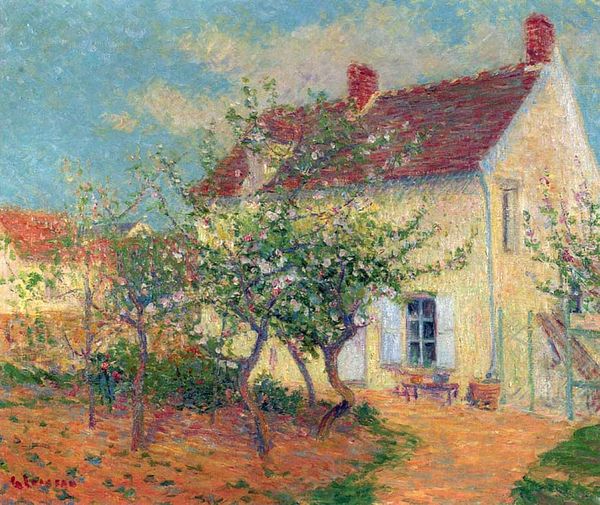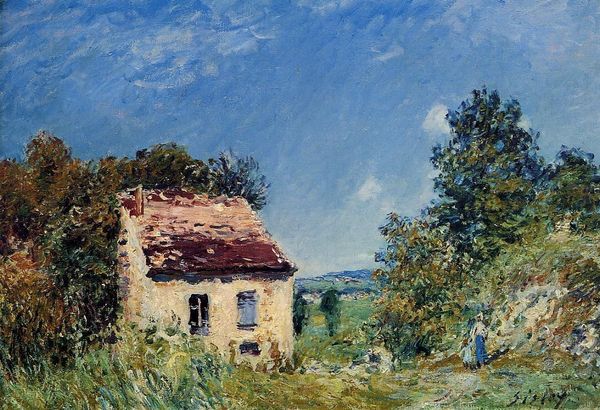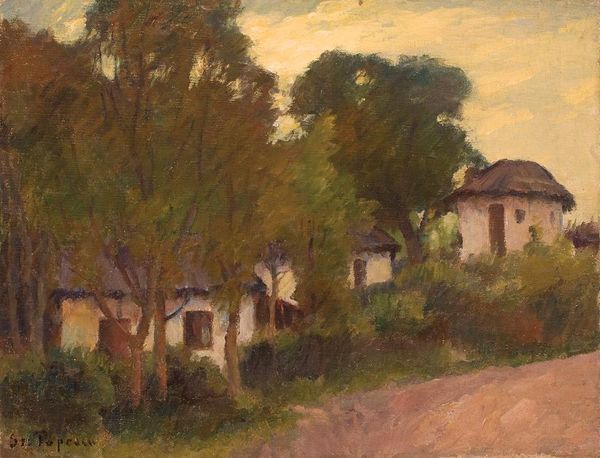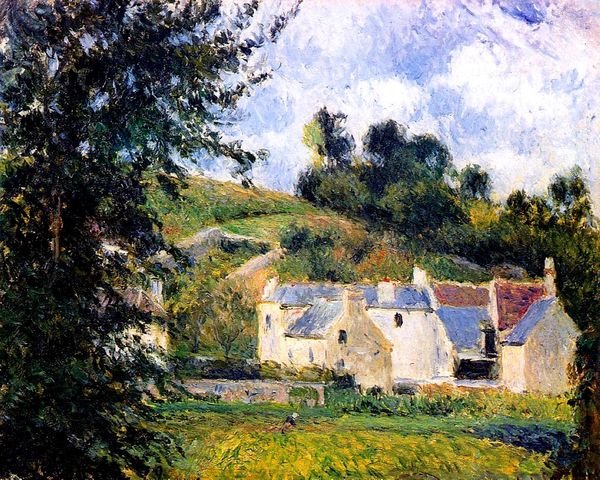
Copyright: Public domain
Curator: Theodore Robinson’s "House with Scaffolding," an oil on canvas painted in 1892. The artist works his Impressionist magic in plein air on this particular landscape piece. Editor: There’s such an air of tranquility in this scene, a quiet, dusty stillness about the building—the scaffolding seems like delicate jewelry adorning it, doesn't it? Almost an archaeological symbol of what’s there and what could be there. Curator: The scaffolding becomes a fascinating frame within a frame, or almost a diagram of change. Notice how it's integrated so carefully into the scene – vertical lines, juxtaposed with the horizontal building, all drenched in soft light, becoming an ephemeral moment captured permanently in oil. Editor: Yes, an ephemeral moment precisely! And that quietness I sense seems imbued with symbolism – a visual marker. Homes, in general, denote roots, continuity… but scaffolding represents progress, the ambition to alter the foundations. It speaks of reinvention and, of course, also decay—impermanence. The scaffolding almost represents a moment of rebirth for a structure—it makes one reflect on transformation, and what is being protected or covered over… or perhaps it stands for all the new beginnings within these walls. Curator: What is wonderful about this is the seemingly casual way it is presented. One could view Robinson setting up his easel one lovely day and simply recording what he saw—the house, the construction. A symbol for a nation rebuilding itself after turmoil, as perhaps this image unknowingly depicts. He then adds to the construction zone his Impressionistic play of light and shadow on surfaces of texture! Editor: And notice also how the scaffolding seems incomplete—as if to question, is the potential to reinvent limitless, or are we bound within perimeters to remain confined? Also it’s worth looking closely at the paint and brushwork, thick in places due to impasto application. It reminds us the painter does more than depict – Robinson seems eager to remind viewers that what is constructed can be unconstructed too… even paintings. Curator: An excellent point. The fleeting, very present sense of transformation and transience reminds one that while the Impressionists often sought to capture a single moment in time, in doing so, they ended up highlighting an experience itself filled with an infinite range of moments. I found my understanding of Impressionism evolving when pondering on its deeper allegorical relevance. Thank you! Editor: It makes one contemplate those subtle indicators of time and temporality in paintings too! What begins as what one "sees", turns out to make one see something far deeper than when first meeting this fascinating composition by Theodore Robinson. Thanks for guiding us!
Comments
No comments
Be the first to comment and join the conversation on the ultimate creative platform.
